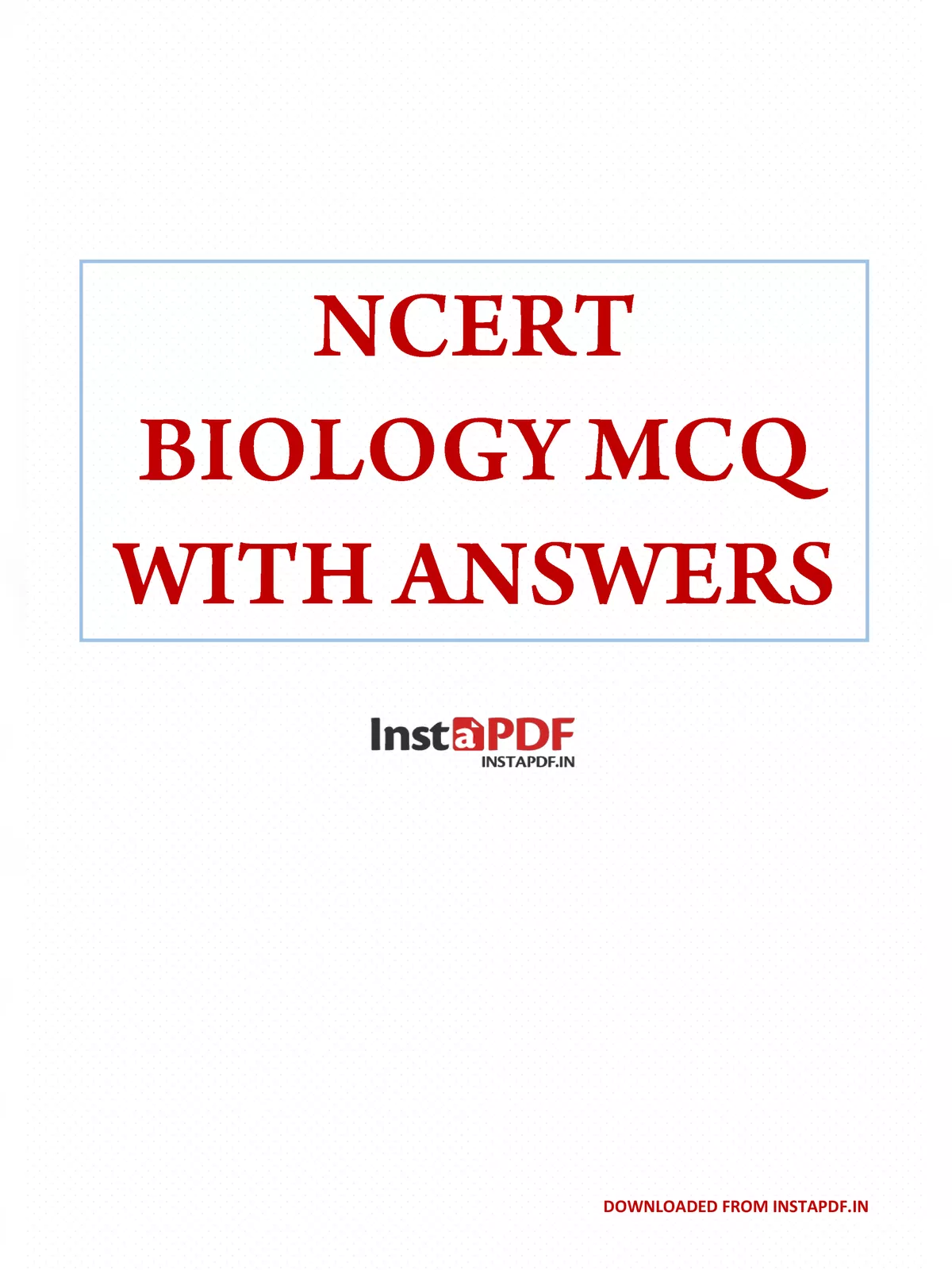NCERT Biology MCQ with Answers - Summary
NCERT Biology MCQs with Answers is an essential resource for students preparing for competitive exams like NEET. Biology is a crucial subject that covers various theories, discoveries, diagrams, and important definitions. Our subject experts have crafted the NCERT Biology MCQs, ensuring they align with the latest exam trends. You can download the NCERT Biology MCQ with Answers PDF to support your study efforts.
Understanding NCERT Biology Multiple Choice Questions
Biology is filled with important concepts, making it a key section for students aiming for exams such as NEET and UPSC. The topics included are primarily drawn from the NCERT syllabus for Class 11 & 12.
NCERT Biology Multiple Choice Questions with Answers
The NCERT Biology MCQ with Answers PDF is a valuable tool for students preparing for various competitive exams, including NEET and UPSC. Practicing these MCQs helps you to enhance your knowledge and improves your chances of doing well.
What is the function of the filiform apparatus in an angiospermic embryo sac?
(a) Brings about opening of the pollen tube
(b) Guides the pollen tube into a synergid
(c) Prevents entry of more than one pollen tube into a synergid
(d) None of these
Which of the following groups is formed only of hermaphrodite organisms?
(a) Earthworm, tapeworm, housefly, frog
(b) Earthworm, tapeworm, sea horse, housefly
(c) Earthworm, leech, sponge, roundworm
(d) Earthworm, tapeworm, leech, sponge
Which of the following options shows bisexual animals only?
(a) Amoeba, sponge, leech
(b) Sponge, cockroach, Amoeba
(c) Earthworm, sponge, leech
(d) Tapeworm, earthworm, honeybee
Read the following statements and select the incorrect one.
(a) Cucurbits and coconuts are monoecious plants.
(b) Papayas and date palms are dioecious plants.
(c) Leeches and tapeworms are bisexual animals.
(d) Sponges and coelenterates are unisexual animals.
Meiosis does not occur in
(a) asexually reproducing diploid individuals
(b) sexually reproducing haploid individuals
(c) sexually reproducing diploid individuals
(d) all of these.
A diploid parent plant body produces ________ gametes and a haploid parent plant body produces ________ gametes.
(a) diploid, haploid
(b) haploid, diploid
(c) diploid, diploid
(d) haploid, haploid
Which of the following organisms has the highest number of chromosomes?
(a) Housefly
(b) Butterfly
(c) Ophioglossum
(d) Onion
In maize, a meiocyte has 20 chromosomes. What will be the number of chromosomes in its somatic cell?
(a) 40
(b) 30
(c) 20
(d) 10
If a butterfly has a chromosome number of 360 in its meiocyte (2n). What will be the chromosome number in its gametes?
(a) 380
(b) 190
(c) 95
(d) 760
In flowering plants, both male and female gametes are non-motile. The method to bring them together for fertilisation is
(a) water
(b) air
(c) pollination
(d) apomixis
In which of the following plants do sepals not fall off after fertilisation and remain attached to the fruit?
(a) Brinjal
(b) Cucumber
(c) Papaya
(d) Bitter gourd
Download the NCERT Biology MCQ with Answers PDF using the link given below.
